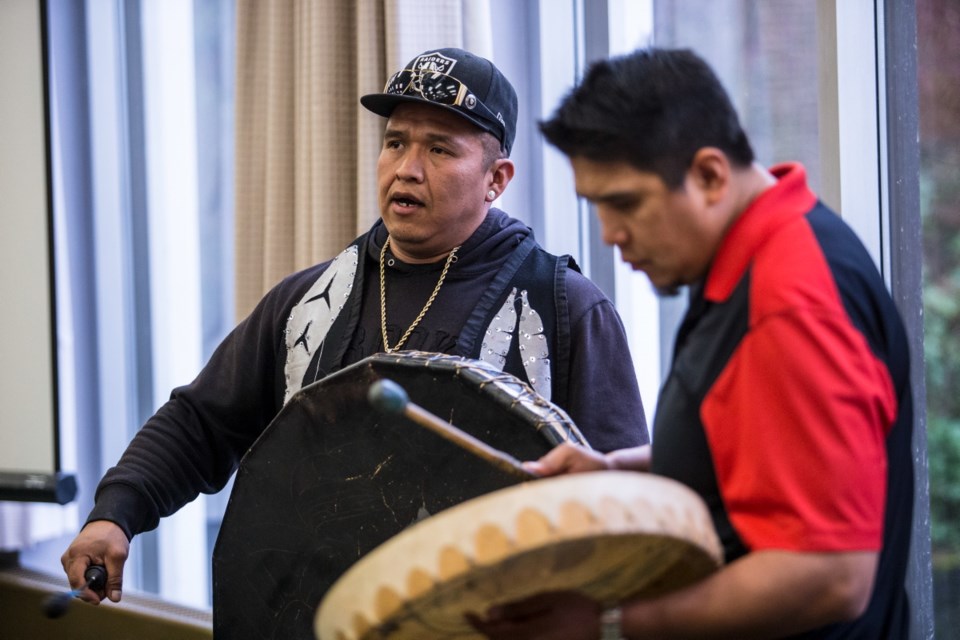Guy Louie was 16 when he got interested in his heritage and began immersing himself in the songs and music of the Ahousaht First Nation.
Born and raised in Victoria, he had limited first-hand experience with his culture, so he relied on audio recordings of his great-grandfather, Peter Webster, that were handed down through the family.
“For a good six to eight years I dedicated my life every day to listening and singing,” he said. “I was listening to it in my sleep, in the car driving. In my house, I was singing with it.”
The songs of the Nuu-chah-nulth-speaking people eventually took hold and, today, Louie, 38, continues his great-grandfather’s efforts to preserve the songs and music by sharing them whenever he gets a chance.
It was with particular pride, therefore, that he sang at the Royal B.C. Museum Tuesday as the collected recordings of his great-grandfather and other Indigenous singers were recognized by the Canadian Commission for UNESCO.
The songs form part of the collection amassed by the late Ida Halpern, a musicologist who travelled Vancouver Island from 1947 to 1980, capturing the ceremonies and cultures of Indigenous communities.
Her body of work includes 342 sound recordings, seven VHS cassettes, one film and 735 photographs, as well as numerous other documents.
The commission announced that the collection will be added to the Canada Memory of the World Register, which was created to promote the importance of archival material as the “memory” of humanity.
The Royal B.C. Museum’s collection of the Vancouver Island Treaties was also added to the registry.
Jack Lohman, the museum’s chief executive officer, said the treaties and the Halpern recordings “capture a rare moment of human thought. Both truly are remarkable collections and rightly deserve to be seen alongside other human achievements in Canada.”
The registry includes the Canadian discovery of insulin, the Hudson’s Bay Company’s archival records and the animated film Neighbours, directed and produced by Norman McLaren.
Besides its historical signficance, Lohman said the Halpern collection represents an important resource for Indigenous communities seeking to revitalize their language and musical traditions.
Louie is living proof of that. Before singing two songs Tuesday, he was able to listen to his great-grandfather perform the same material years ago at a public event recorded by Halpern.
“It always means a lot to hear a recording of a performance he did for the museum,” Louie said. “It brings a great feeling to know what he has done … to preserve a very vital part of our culture.”
Genevieve Weber, an archivist who worked on the Halpern collection for 18 months, said it was “magical” hearing Louie sing.
“I have a relationship with this collection that is sort of a typical archivist relationship, where you get to know something really intimately,” she said. “But then to have him come in and bring it to life was amazing.
“I’m constantly trying to fight against the notion that archives are something in the past and are dead and stagnant, and, obviously, this is proof that they’re not.”



